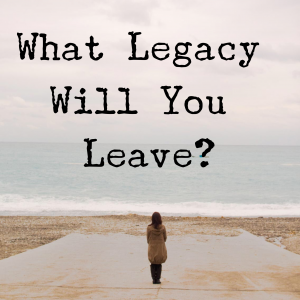A Client Story: An unexpected loss turns organizing photos into archiving memories
Last year, Heather (not her real name) contacted me looking for help organizing her photos. Heather and her husband were getting ready to make a move from the town they raised their children in, to their cabin. Heather’s goal was to clear some of the clutter before they moved.
As often happens, time got away from her and she just couldn’t get to her photo project before the move. Fast forward several months and we’re into the new year. I get a call from Heather with the news that her husband had just unexpectedly passed away at age 57.
In those few short months, Heather’s goal changed. She no longer wanted to just get organized and declutter. She now wanted and needed to preserve and archive her husband’s memory and the memories that their family made together.
Depending on where you’re at in life, your feelings about your photos and memories are going to change. Life events like graduations, weddings, downsizing, and deaths put an urgency on doing something with your photos quickly, but what if you didn’t wait for an event? What if you approached your photos with an ‘archiving’ mindset instead?
What is an archiving mindset?...
An archiving mindset means that your family photos and memories are organized in a systematic and secure manner for long-term preservation so that they remain accessible and in good condition both now and for future generations.
In practical terms, here are some tips and things to consider if you want to ‘archive' your family memory collection.
1. Own your photos. Wherever you decide to store your digital photos, make sure you keep a copy that you own and that you can get to without the internet. Don’t use a cloud service to store your one and only copy of your family’s memories.
2. Organize so you can easily find and access your photos. Create a systematic approach, whether it is organizing your photos by year or theme, or by adding keywords so you can search on them.
3. Label and Catalog. Add keywords, descriptions, captions to your photos in the filename or the metadata of the photo to tell your great-grandchildren something about that photo. This might only include the date, but what if they also had keywords with people's names, locations or events?
4. Digitize your important and favorite photos and videos, such as printed photos, slides, old home videos, etc. These physical items won’t last forever. This will allow you to preserve them, back them up, and share them more easily.
5. Store your physical photos safely. Protect your physical photos from deterioration by storing them in acid-free, lignin-free, archival-quality photo albums or boxes. Keep them in a cool, dry, and dark environment to minimize exposure to light, humidity, and temperature fluctuations, which can damage photos over time.
6. Back them up. Ensure that both your printed and your digital memories are backed up. Best practice for backup is 3 copies - 2 accessible on different mediums, 1 offsite (e.g. a cloud copy). Technology fails us daily! I love a service called Backblaze.
7. Share them by creating a Family Archive. Consider creating a designated location to store your family photo archive and tell your stories. This might include creating an online family gallery that others can also contribute to. Assign someone to be the family memory keeper to help maintain the family archive.
How are we archiving Heather’s family’s collection and preserving her husband’s memory?...
We consolidated and organized her family's digital photo and video memories into a central digital hub that is backed up. Heather is the keeper of the family photo hub.
Heather and her daughters sorted through approximately 10k printed photos and selected 550 of their favorites that have been digitized. We then added correct dates and keywords to the scanned photos. These are being incorporated into her digital collection so they can be backed up.
We are converting approximately 30 old videotapes of home movies to mp4 formatted digital files that we will incorporate into her digital library.
Heather is sharing it with her people…I can’t give specifics yet because it’s a surprise, but I’ll fill you in later.
I think Heather would agree that this work isn’t always easy, especially when you’re missing a loved one, and it does take time. But in the long run, doing it right and doing it well now can bring so much joy, as well as prevent you from:
having to do it multiple times because you got too busy and kept starting and stopping;
making a poor technology choice because you didn’t take the time to understand the system;
having to do it urgently because of a life event;
getting frustrated and spending even more time looking for photos in an unorganized library; and,
having regrets that you didn’t do it sooner.
Overwhelmed with your photos? Getting started organizing your photos can be the hardest part! Grab our FREE GETTING STARTED GUIDE that includes tips for how to create a plan, teaches you how to take inventory of your collection, and provides the form to do it.
Holly Corbid is the Founder/Owner of Capture Your Photos, where we help you to organize, preserve, and share your lifetime of memories. Helping you touch hearts with your photos is our passion. We specialize in digital photo organization and work remotely with clients all over the country.
Find us at www.captureyourphotos.com or contact us here.


